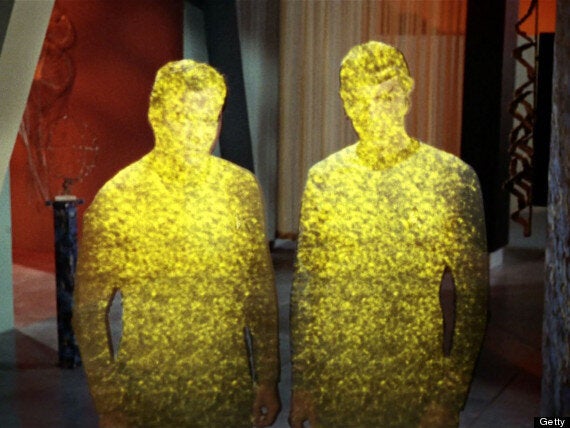In popular sci-fi, teleportation allows you to zip into orbit quicker than the time it takes to say "Beam me up, Scotty".
The reality - even if the technology existed to make it possible - would be somewhat different, according to a group of physics students.

In reality, Kirk and Spock could have been waiting a long time..
If slow broadband speeds are hard to cope with, try beaming speed. Teleporting just one person off the surface of the Earth would take 350,000 times longer than the universe has been in existence.
That may not be so surprising when you consider the amount of information being transmitted. Including all the data in the traveller's brain, this amounts to around 2.6 times 10 to the power of 42 bits - that is, 2.6 times one followed by 42 noughts.
David Starkey, a member of the University of Leicester team, said: "We decided to investigate the practicalities of teleportation as a means of everyday travel.
"We employed several approximations to determine the amount of data required in bits to fully store a human genetic code and neural information, and the signal to noise ratio of typical signalling equipment.
"Our results indicate the time scales to complete a full teleport of an individual are a little too lengthy at this time. Current means of travel remain more feasible."
The students, all in their final year of a Master of Physics degree, worked out what it would take to represent a human as transferable data.
They found that the energy required to teleport into orbit was dependent on bandwidth. The less time it took, the more power was consumed.
Assuming a bandwidth of 29.5 to 30 gigahertz, the transfer would require up to 4.5 times 10 to the power of 15 years.
The universe is thought to be abound 14 billion years old. Beaming someone up to an orbiting spacecraft would therefore take about 350,000 times longer than all the years that have passed since the Big Bang.
The findings are published in the University of Leicester's Journal of Physics Special Topics.
Course leader Mervyn Roy, a lecturer at the university's Department of Physics and Astronomy, said: "A lot of the papers published in the Journal are on subjects that are amusing, topical, or a bit off-the-wall. Our fourth years are nothing if not creative.
"But, to be a research physicist - in industry or academia - you need to show some imagination, to think outside the box, and this is certainly something that the module allows our students to practise."